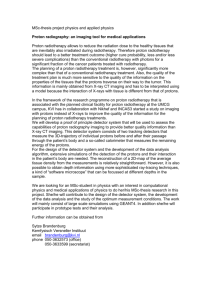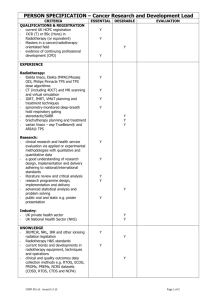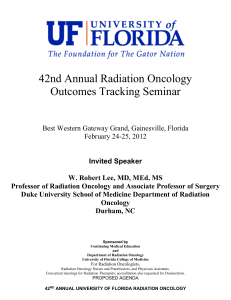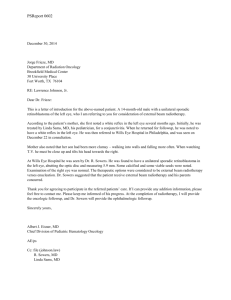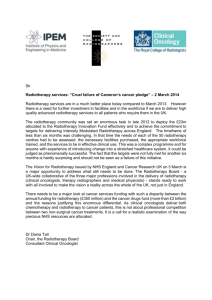The Lancet Oncology: Proton beam therapy offers potential
advertisement
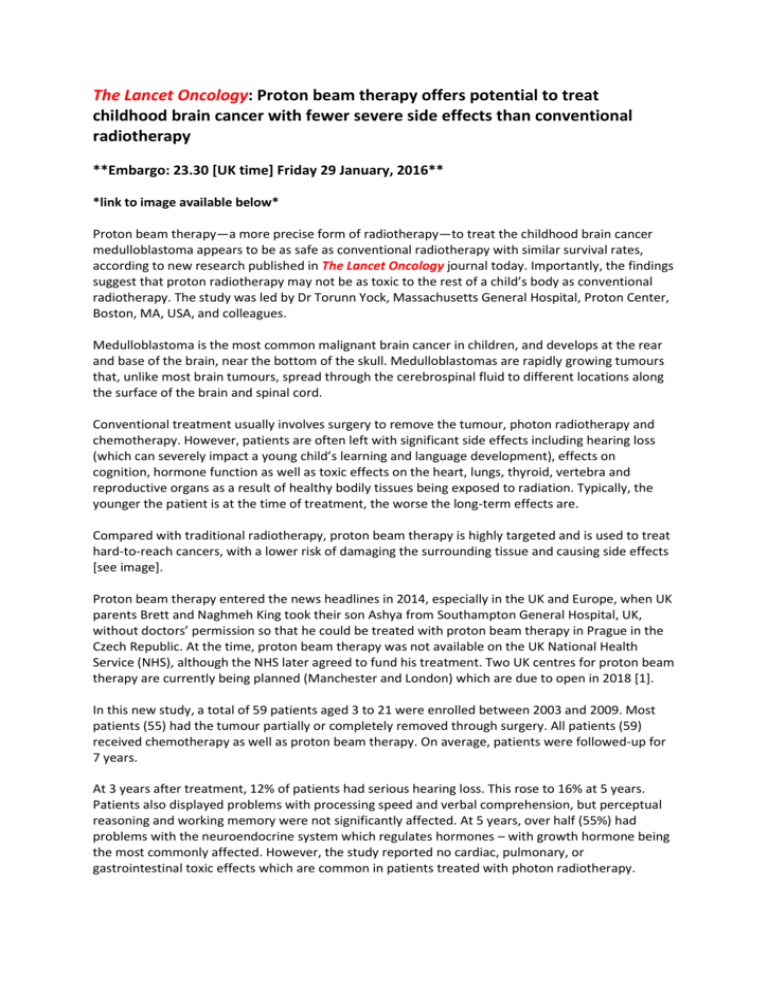
The Lancet Oncology: Proton beam therapy offers potential to treat childhood brain cancer with fewer severe side effects than conventional radiotherapy **Embargo: 23.30 [UK time] Friday 29 January, 2016** *link to image available below* Proton beam therapy—a more precise form of radiotherapy—to treat the childhood brain cancer medulloblastoma appears to be as safe as conventional radiotherapy with similar survival rates, according to new research published in The Lancet Oncology journal today. Importantly, the findings suggest that proton radiotherapy may not be as toxic to the rest of a child’s body as conventional radiotherapy. The study was led by Dr Torunn Yock, Massachusetts General Hospital, Proton Center, Boston, MA, USA, and colleagues. Medulloblastoma is the most common malignant brain cancer in children, and develops at the rear and base of the brain, near the bottom of the skull. Medulloblastomas are rapidly growing tumours that, unlike most brain tumours, spread through the cerebrospinal fluid to different locations along the surface of the brain and spinal cord. Conventional treatment usually involves surgery to remove the tumour, photon radiotherapy and chemotherapy. However, patients are often left with significant side effects including hearing loss (which can severely impact a young child’s learning and language development), effects on cognition, hormone function as well as toxic effects on the heart, lungs, thyroid, vertebra and reproductive organs as a result of healthy bodily tissues being exposed to radiation. Typically, the younger the patient is at the time of treatment, the worse the long-term effects are. Compared with traditional radiotherapy, proton beam therapy is highly targeted and is used to treat hard-to-reach cancers, with a lower risk of damaging the surrounding tissue and causing side effects [see image]. Proton beam therapy entered the news headlines in 2014, especially in the UK and Europe, when UK parents Brett and Naghmeh King took their son Ashya from Southampton General Hospital, UK, without doctors’ permission so that he could be treated with proton beam therapy in Prague in the Czech Republic. At the time, proton beam therapy was not available on the UK National Health Service (NHS), although the NHS later agreed to fund his treatment. Two UK centres for proton beam therapy are currently being planned (Manchester and London) which are due to open in 2018 [1]. In this new study, a total of 59 patients aged 3 to 21 were enrolled between 2003 and 2009. Most patients (55) had the tumour partially or completely removed through surgery. All patients (59) received chemotherapy as well as proton beam therapy. On average, patients were followed-up for 7 years. At 3 years after treatment, 12% of patients had serious hearing loss. This rose to 16% at 5 years. Patients also displayed problems with processing speed and verbal comprehension, but perceptual reasoning and working memory were not significantly affected. At 5 years, over half (55%) had problems with the neuroendocrine system which regulates hormones – with growth hormone being the most commonly affected. However, the study reported no cardiac, pulmonary, or gastrointestinal toxic effects which are common in patients treated with photon radiotherapy. At 3 years after treatment, progression-free survival was 83%. At 5 years, progression-free survival was 80%. The authors say: “Our findings suggest that proton radiotherapy seems to result in an acceptable degree of toxicity and had similar survival outcomes to those achieved with photon-based radiotherapy. Although there remain some effects of treatment on hearing, endocrine, and neurocognitive outcomes—particularly in younger patients—other late effects common in photontreated patients, such as cardiac, pulmonary, and gastrointestinal toxic effects, were absent.” They conclude: “Proton radiotherapy resulted in acceptable toxicity and had similar survival outcomes to those noted with conventional radiotherapy, suggesting that the use of the treatment may be an alternative to photon-based treatments.” Writing in a linked Comment, Dr David R Grosshans, Department of Radiation Oncology, University of Texas MD Anderson Cancer Center, Houston, TX, USA, says: “I believe that radiation oncologists have always understood that our treatments are associated with the potential for severe adverse effects. I also believe that many in radiation oncology embrace new technology, not simply to have the latest and greatest innovations, but rather to reduce the effect of radiation therapy on patients’ quality of life. Nowhere in oncology is this more important than for paediatric cancers.” He concludes: “This study sets a new benchmark for the treatment of paediatric medulloblastoma and alludes to the clinical benefits of advanced radiation therapies.” NOTES TO EDITORS: Study funded by US National Cancer Institute and Massachusetts General Hospital [1] https://www.england.nhs.uk/commissioning/spec-services/highly-spec-services/pbt/ Article: Dr Torunn Yock, Massachusetts General Hospital, Proton Center, Boston, MA, USA. E) tyock@partners.org or contact via Katie Marquedant in the Media Office. T) +1 617-726-0337 E) kmarquedant@mgh.harvard.edu Comment: Dr David R Grosshans, Department of Radiation Oncology, University of Texas MD Anderson Cancer Center, Houston, TX, USA. T) +1 713 745 2457 E) dgrossha@mdanderson.org For image see [please credit as below]: http://press.thelancet.com/protonimage.tif Credit: Dr David R Grosshans Caption: Proton therapy irradiates less healthy tissue than photon radiotherapy. The image shows the dose distributions for proton (left) and conventional photon therapy (right) for a patient with medulloblastoma. Higher doses are red, lower doses green. For full Article and Comment see: http://press.thelancet.com/proton.pdf For Appendix see: http://press.thelancet.com/protonappx.pdf NOTE: THE ABOVE LINK IS FOR JOURNALISTS ONLY; IF YOU WISH TO PROVIDE A LINK TO THIS PAPER FOR YOUR READERS, PLEASE USE THE FOLLOWING, WHICH WILL GO LIVE AT THE TIME THE EMBARGO LIFTS: http://www.thelancet.com/journals/lanonc/article/PIIS14702045(15)00167-9/abstract
